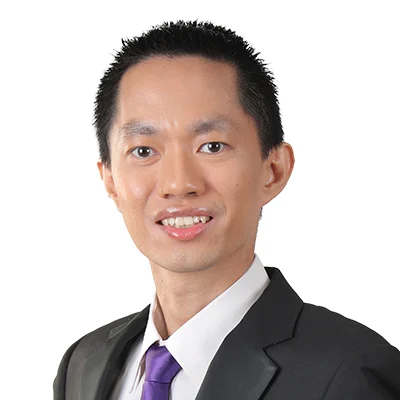Artificial intelligence (AI) has deeply woven itself into our everyday lives, from education to business to national security. What society once resisted has become a trusted companion. It has changed how the world thinks about intelligence, innovation, and security.
That moment of realisation came full circle during P&A Grant Thornton’s recent Cybersecurity Forum, “Shaping Tomorrow’s Cybersecurity: Protecting the Digital Workforce.” The event explored how organisations could strengthen their defences, build resilience, and lead responsibly amid evolving cyber threats. Estemeed speakers conversed on how technology, human behavior, and leadership intersect in shaping a cybersecure organisation. Here are the insights I got.
Cybersecurity as a Leadership Imperative
One of the most powerful points came from Roger Collantes, co-founder and CEO of Smarter Robotics, who emphasised that cybersecurity is not just a technical concern; it is a leadership conversation. Today, leaders are no longer judged solely by their ability to innovate, but also by their ability to safeguard their people and data in a hyperconnected environment.
This led to Roger’s point about how the workforce is being AI-powered, hybrid, and digital-native. We begin to integrate security into everyday operations. We use multiple devices, collaborate through the cloud, and rely heavily on intelligent tools to work smarter and faster. This brings efficiency, but it also introduces vulnerabilities.
Which brings us to P&A Grant Thornton ’s Vigil@nt services, which exemplify how businesses can adopt advanced digital solutions without compromising safety through services like Vigil@nt. This is a learning tool aimed at providing organisations tailored cybersecurity training to monitor, detect, and respond to threats in real time. Because as Roger concluded, “Cyber resilience must start with human behavior.” No matter how sophisticated the tools, people remain in the first line of defense.
Technology is rewriting the rules of business
Meanwhile, Donald Lim, president and COO of DITO CME, reminded everyone that technology is rewriting every rule of business and governance. For example, from a marketing perspective, AI has redefined creativity, data analysis, and customer engagement. What used to take weeks of market testing can now be achieved in hours through predictive analytics and automated insights.
However, Donald also stressed that this rapid advancement requires a balanced approach. In connection with Roger’s cybersecurity as a leadership imperative, leadership roles are evolving, with more organisations investing in chief information security officers (CISOs) and cybersecurity teams. This is a sign that businesses are recognising security as an enabler of innovation rather than a barrier.
However, despite the rise of CISOs in the Philippines, he shared findings from the National Cyber Security Index (NCSI), that the Philippines is ranked 45th in global cyber threat preparedness. The ranking shows that while progress is being made, the country still has a long way to go in strengthening its defenses. Yet, Donald’s message was one of optimism: The Philippines, he said, has a young, adaptable population and a growing innovation ecosystem. His challenge to us was simple but powerful: “We can be the world’s digital workforce — if we invest in skills, not excuses.”Our potential as a nation lies in our people, in how we adapt, learn, and build skills that align with the needs of the digital economy.
From protection to resilience
In my session during the forum, I emphasised the pressing need to move from protection to resilience. Drawing data from McKinsey & Company’s Check Point Research, I shared that 90% of organisations accelerated their digital transformation after the pandemic. While this shift enabled business continuity, it also opened the floodgates to new and more complex cyber threats.
In the first quarter of 2025 alone, global cyber threats surged by 50%, with ransomware attacks up by 126%. The Philippines was not spared as 352,000 Filipinos reportedly fell victim to scam calls, while 3,572 phishing attacks were recorded in the same quarter, representing a 50% increase from the previous year.
As AI and frontier technologies continue to evolve, they will increasingly be viewed as sources of risk within the next seven years. This reality calls for a strategic shift to turn protection into resilience.
Cyber resilience involves more than just preventing attacks; it means preparing for, responding to, and recovering from them effectively. In essence, resilience is about ensuring that even in the face of disruption, organisations remain capable of delivering their purpose.
The evolution of technology
Reflecting on these insights, I couldn't help but think of how technology itself has evolved. It began as a simple tool - something we used to do our work faster or easier. Today, it has become a partner in how we think, decide, and lead.
AI now changes how we perform tasks at the same time; it transforms how we understand problems and create solutions. It has blurred the lines between human intelligence and machine capability, compelling us to ask deeper questions about ethics, trust, and accountability
But as with any transformation, there are risks, and these risks require informed leadership. Leaders must now cultivate digital wisdom in which we must have the ability to balance innovation with integrity, automation with empathy, and progress with protection.
The cybersecurity forum reminded me that leadership in the digital age demands awareness, adaptability, and foresight. We cannot lead effectively if we don't understand the technologies shaping our organisations and societies. We cannot talk about empowerment without addressing the systems that secure it.
As leaders, we must cultivate the ability to balance innovation with integrity and progress with protection. The future belongs to these who can harness technology with both confidence and conscience. It is now our call to engage with the digital world to have a more cybersecure future because the strongest defence will always begin with informed and empowered people.
As published in The Manila Times, dated 05 November 2025




